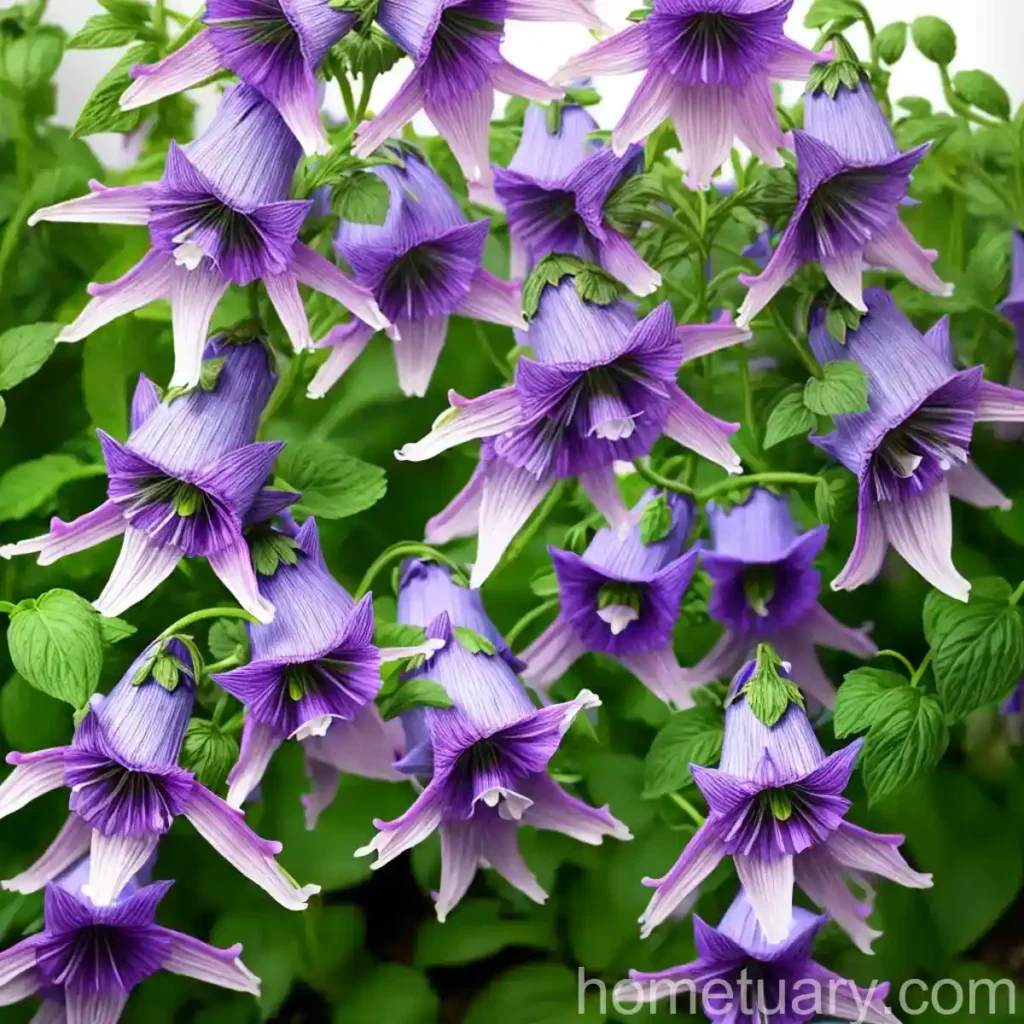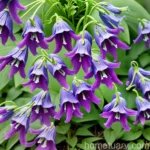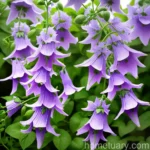Bellflower (Campanula takesimana ‘Elizabeth’)
Whether you are an experienced gardener or just discovering the joys of plant cultivation, the Bellflower (Campanula takesimana ‘Elizabeth’) is a captivating and delightful addition to any garden. In this comprehensive guide, we will explore the various aspects of this beautiful plant, including its culture, uses, care requirements, common diseases, and much more. By the end of this article, you will have a thorough understanding of the Bellflower and be equipped with the knowledge to cultivate and care for this stunning plant.
What is Bellflower (Campanula takesimana ‘Elizabeth’)?
The Bellflower, scientifically known as Campanula takesimana ‘Elizabeth’, is a member of the Campanulaceae family, which consists of approximately 300 to 400 species of flowering plants. The genus name “Campanula” is derived from the Latin word for “little bell,” which aptly describes the shape of the plant’s flowers. The species name “takesimana” is derived from its native region, Takeshima Island in South Korea. The specific cultivar name “Elizabeth” is given to this particular variety of Bellflower.
The ‘Elizabeth’ variety of Bellflower is renowned for its elegant, bell-shaped flowers that bloom in shades of pale lavender or white, adding a touch of charm and grace to any garden or landscape. This perennial plant is known for its prolific flowering and appealing ornamental features, making it a popular choice among gardeners and horticulturists.

Key Takeaways – Bellflower (Campanula takesimana ‘Elizabeth’)
Before delving deeper into the specific aspects of Bellflower care and cultivation, let’s overview some key takeaways about this enchanting plant:
- Scientific Name: Campanula takesimana ‘Elizabeth’
- Common Names: Bellflower ‘Elizabeth’, Korean Bellflower ‘Elizabeth’
- Family: Campanulaceae
- Native Region: Takeshima Island, South Korea
- Flower Color: Pale lavender or white
- Plant Type: Perennial
- Ornamental Features: Bell-shaped flowers, prolific flowering
- Uses: Ornamental, landscaping, garden borders
- Cultivar: ‘Elizabeth’
- Growing Season: Late spring to early summer
- Hardiness Zones: 4-8
Now that we have an overview of the Bellflower’s botanical details, let’s delve into the specifics of its culture, uses, and care requirements to ensure its flourishing in the garden.
Culture
Cultivating the Bellflower ‘Elizabeth’ involves considering its environmental preferences and providing the necessary conditions for its optimal growth and blooming. Understanding the plant’s cultural requirements is essential for creating an environment where it can thrive.
Water
Proper watering is crucial for the health and vitality of the Bellflower. Here are some key points to consider when watering this plant:
- Watering Frequency: Bellflowers prefer consistently moist soil, especially during their active growth and blooming periods. Therefore, regular watering is recommended, ensuring that the soil does not dry out completely between watering sessions.
- Avoid Waterlogging: While the plant appreciates moist soil, it is important to prevent waterlogging, as excessive moisture can lead to root rot and other issues. Ensure that the soil has adequate drainage to prevent water accumulation around the roots.
Sunlight
The Bellflower ‘Elizabeth’ exhibits specific preferences regarding sunlight exposure, and providing the right amount of light is essential for its overall well-being.
- Light Requirements: Bellflowers thrive in bright, indirect sunlight or partial shade. They do well when they receive morning sun and are sheltered from intense afternoon sunlight, especially in regions with hot climates.
- Indoor Cultivation: For indoor cultivation, ensure that the plant receives bright, indirect light to mimic its outdoor conditions. Placing it near a well-lit window can provide the ideal lighting conditions.
Fertilizer
Feeding the Bellflower with appropriate nutrients can significantly enhance its growth and flowering capacity. Here are some fertilizer-related considerations for this plant:
- Fertilizing Frequency: Apply a balanced, all-purpose fertilizer to the Bellflower ‘Elizabeth’ in early spring, just before the onset of the active growing season. Additionally, a light application of fertilizer during the blooming period can help sustain the plant’s vigor.
- Avoid Overfeeding: While fertilizing is beneficial, avoid overfeeding the plant, as excessive nutrients can lead to issues such as excessive foliage growth at the expense of flowering. Follow the recommended dosage and frequency provided with the fertilizer.
Uses
The Bellflower ‘Elizabeth’ serves various practical and ornamental purposes, making it a versatile and valuable addition to gardens and landscapes. Understanding its uses can inspire creative applications and enhance the overall aesthetic appeal of the outdoor space.
Ornamental Value
One of the primary uses of the Bellflower ‘Elizabeth’ is its ornamental value, as it adds a touch of elegance and beauty to gardens and landscapes.
- Garden Borders: Planted along garden borders and pathways, the Bellflower ‘Elizabeth’ creates a charming and inviting ambiance with its delicate, bell-shaped flowers.
- Containers and Planters: Due to its compact growth habit, this Bellflower variety is well-suited for container gardening, adding interest and color to outdoor patios, balconies, and terraces.
- Floral Displays: The cut flowers of the Bellflower ‘Elizabeth’ are ideal for creating stunning floral arrangements, offering a fresh and graceful addition to indoor and outdoor décor.
Landscaping Applications
Beyond its ornamental uses in gardens, the Bellflower ‘Elizabeth’ can be integrated into various landscaping designs to achieve aesthetic and functional objectives.
- Mixed Borders: Complementing other perennials and shrubs, the Bellflower ‘Elizabeth’ adds vertical interest and a soft, pastel color palette to mixed border plantings.
- Rock Gardens: Due to its compact size and low maintenance requirements, this Bellflower variety is well-suited for rock gardens, contributing to the creation of visually appealing alpine landscapes.
Soil
The soil composition and quality play a vital role in the overall health and development of the Bellflower ‘Elizabeth’. Understanding its soil preferences is essential for creating an optimal growing environment.
Ideal Soil Type: Bellflowers thrive in well-draining, moderately fertile soil that is rich in organic matter. Here are some considerations for soil preparation and maintenance:
- Loamy Soil: A loamy soil type, characterized by a balanced mixture of sand, silt, and clay, provides the ideal growing medium for Bellflowers, offering adequate drainage and moisture retention.
- Soil Amendment: Prior to planting, incorporate organic matter such as compost or well-rotted manure into the soil to improve its structure and fertility, creating a conducive environment for the plant’s root development.
Pruning
Proper pruning and maintenance activities are essential for promoting healthy growth, prolonging flowering, and maintaining the overall aesthetic appeal of the Bellflower ‘Elizabeth’.
Deadheading: Regularly remove spent flowers from the plant to encourage continuous blooming and prevent the formation of seeds. Deadheading redirects the plant’s energy from seed production to the development of new flowers, extending the blooming period.
Cutting Back: After the blooming period, consider cutting back the stems to remove any overgrown or damaged foliage. This promotes fresh growth and rejuvenates the plant for the next blooming season.
Propagation
Propagating the Bellflower ‘Elizabeth’ allows for the expansion of its presence in the garden and offers the opportunity to share the plant with fellow gardening enthusiasts.
Division: Divide established clumps of Bellflowers in early spring or late summer to propagate new plants. Carefully separate the root clumps, ensuring that each division has a sufficient amount of healthy roots and shoots for successful establishment.
Seed Propagation: Propagate Bellflower ‘Elizabeth’ from seeds by sowing them indoors in early spring or directly in the garden soil after the last frost date. Follow the recommended sowing depth and spacing for optimal germination and seedling development.
Container Popularity
The Bellflower ‘Elizabeth’ has gained popularity as a container plant due to its compact growth habit and striking ornamental features, making it a favorite choice for container gardening enthusiasts.
Suitable Containers: Choose well-draining containers with adequate drainage holes to prevent waterlogging and root rot. Terracotta pots and decorative planters are popular choices for showcasing the elegant blooms of the Bellflower ‘Elizabeth’.
Indoor Cultivation: For indoor cultivation, select a bright, airy location with ample natural light to accommodate the plant’s light requirements. Place the container near a window or in a well-lit room to ensure the plant’s vitality.
Common Diseases
Like all plants, the Bellflower ‘Elizabeth’ is susceptible to certain diseases and disorders, and recognizing and addressing these issues is crucial for maintaining the plant’s health and vigor.
Powdery Mildew: This fungal disease manifests as a powdery white coating on the leaves and stems of the plant, often caused by high humidity and poor air circulation. Control measures include ensuring adequate air circulation, reducing humidity, and applying fungicidal treatments if necessary.
Root Rot: Excessive soil moisture and poor drainage can lead to root rot in Bellflowers, resulting in wilting, yellowing foliage, and stunted growth. Preventive measures include improving soil drainage and avoiding overwatering.
Disease Diagnosis
Diagnosing potential diseases and issues affecting the Bellflower ‘Elizabeth’ involves careful observation of the plant’s symptoms and prompt intervention to mitigate the impact of the problem.
Symptom Observation: Pay attention to changes in leaf color, texture, and overall plant vitality. Additionally, inspect the plant for signs of pests, fungal infections, and environmental stressors that may contribute to its declining health.
Professional Consultation: If uncertain about a particular disease or issue, seek advice from a local horticulturist or plant health expert who can offer guidance on disease management and control strategies.
Common Pests
Pest infestations can pose a threat to the health and appearance of the Bellflower ‘Elizabeth’, requiring proactive measures to prevent and manage potential pest issues.
Aphids: These small, soft-bodied insects feed on the plant’s sap, causing distorted growth and honeydew secretion. Control aphid infestations using insecticidal soaps or horticultural oils, and encourage natural predators such as ladybugs to aid in pest management.
Snails and Slugs: These pests are known for feeding on tender foliage and flowers, leaving behind characteristic slime trails. Employ physical barriers, such as copper tape or diatomaceous earth, to protect the Bellflower from snail and slug damage.
Botanist’s Tips
Glean insights and recommendations from experienced botanists and horticulturists to enhance your understanding of the Bellflower ‘Elizabeth’ and its optimal care requirements.
Companion Planting: Pair Bellflowers with companion plants such as ornamental grasses, astilbe, and hostas to create visually harmonious and ecologically beneficial garden arrangements.
Mulching: Apply a layer of organic mulch around the base of Bellflowers to conserve soil moisture, suppress weed growth, and provide insulation to the roots during extreme temperatures.
Fun Facts
Enrich your knowledge with interesting and captivating facts about the Bellflower ‘Elizabeth’, adding depth and intrigue to your appreciation of this delightful plant.
- In folklore, Bellflowers were associated with magical properties and were believed to possess protective qualities against malevolent forces.
- The botanical name “Campanula” refers to the bell-shaped appearance of the plant’s flowers, while “takesimana” is derived from the plant’s native region, Takeshima Island in South Korea.
- Bellflowers have been celebrated in literature and poetry for their delicate beauty and ethereal charm, inspiring artists and writers throughout history.
In conclusion, the Bellflower (Campanula takesimana ‘Elizabeth’) stands as a captivating and cherished plant that enriches gardens and landscapes with its graceful presence and enchanting blooms. By understanding its culture, uses, care requirements, and potential challenges, you can cultivate and enjoy the splendor of this remarkable perennial, creating a botanical tapestry of elegance and charm in your outdoor spaces.
We hope this comprehensive guide equips you with valuable insights and practical knowledge for embracing the beauty of Bellflowers in your gardening endeavors.
To further expand your understanding and exploration of Bellflowers, we recommend exploring the following external resources:
- Royal Horticultural Society – Bellflowers
- Missouri Botanical Garden – Campanula
- University of Maryland Extension – Growing Perennials
We hope you find joy and inspiration in the world of Bellflowers and discover the countless ways to incorporate their timeless allure into your gardening pursuits.
Throughout the cultivation journey with the Bellflower ‘Elizabeth’, may you find delight in the ever-changing tapestry of blossoms and leaves, witnessing the beauty and resilience of nature unfurling before your eyes.















